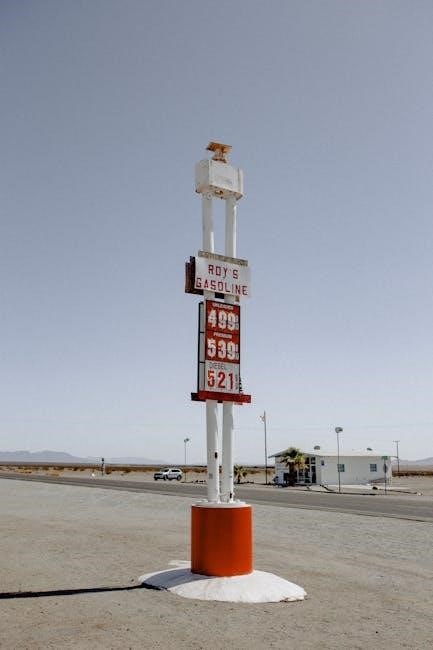Ford Truck Parts Interchange⁚ A Comprehensive Guide
This guide explores Ford truck part interchangeability across models and years. Discover how to leverage online resources, junkyards, and cross-referencing databases to find compatible parts. Learn about identifying interchangeable components from other manufacturers, and crucial considerations when using non-OEM parts to ensure safe and reliable repairs.
Utilizing Online Resources for Interchange Information
The internet offers a wealth of resources for determining Ford truck part interchangeability. Websites like Gary’s Garage Mahal provide documentation and part cross-referencing information, enabling users to identify compatible parts across various Ford truck models and years. Many online forums dedicated to Ford trucks also offer valuable insights from experienced mechanics and enthusiasts who share their knowledge and experiences regarding part interchangeability. These forums often contain detailed discussions and troubleshooting advice, helping users identify suitable replacements and avoid costly mistakes. Furthermore, dedicated online databases specialize in automotive part interchange and cross-referencing, allowing users to input a part number and find compatible alternatives from different manufacturers or model years. These databases can be invaluable for finding hard-to-locate parts or for identifying cost-effective replacements. Remember to always verify compatibility before purchasing parts, as minor variations between models can sometimes affect fitment or performance. Carefully review specifications and user reviews to ensure the chosen part meets your needs and expectations. By utilizing these online resources effectively, you can significantly streamline the process of finding the right replacement parts for your Ford truck.
Finding Interchange Information at Junkyards
Junkyards, also known as salvage yards or auto recyclers, can be surprisingly valuable resources for finding Ford truck parts and obtaining interchange information. While online resources provide a wealth of data, the hands-on approach of a junkyard allows for direct examination of parts. Experienced junkyard staff often possess extensive knowledge of vehicle models and part compatibility, making them excellent sources of information. They can identify parts visually and confirm their fitment for your specific truck model and year. Don’t hesitate to ask questions; their expertise can save you time and prevent purchasing incompatible components. Some junkyards even maintain online databases or catalogs, making it easier to locate specific parts before visiting. However, always verify the part’s condition thoroughly before purchase. Inspect for wear, damage, or signs of previous repairs. Consider taking photos of the part’s markings to ensure you obtain the correct component. While junkyards may not always have the exact part you need, their staff’s knowledge of interchangeable parts can guide your search and lead to suitable alternatives. Remember to check the junkyard’s return policy before purchasing any parts, especially if you’re unsure about compatibility.
Interchangeability Across Ford Truck Models and Years
Understanding part interchangeability across different Ford truck models and years is crucial for efficient and cost-effective repairs. While some parts remain consistent across multiple generations, others vary significantly. Factors such as engine type, cab configuration, and drivetrain will influence part compatibility. For instance, certain body panels or interior components might be interchangeable between similar models across several years, while engine parts or transmission components are typically more model-specific. To determine compatibility, always cross-reference part numbers. These numbers, usually found stamped on the part itself or in a parts catalog, provide definitive identification. Online resources like Ford’s official parts website or third-party automotive databases can assist in verifying part numbers and checking for interchangeability. Forums and online communities dedicated to Ford trucks can also be invaluable resources. Experienced owners often share their knowledge and experiences with part swaps, highlighting successful and unsuccessful attempts. Remember that even with compatible part numbers, visual inspection is essential before installation. Minor variations in design or mounting points can sometimes lead to unforeseen problems. Always prioritize safety and ensure the proper fitment of parts to avoid potential mechanical issues or safety hazards.
Specific Ford Truck Model Interchange
This section delves into detailed interchange guides for specific Ford truck models, including the popular F-Series (F150, F250, F350) and explores part compatibility across different generations of Ford trucks.
Ford F-Series Interchange Guide (F150, F250, F350)
The Ford F-Series, encompassing the F150, F250, and F350, presents a complex yet fascinating landscape of parts interchangeability. While sharing a common lineage, variations across model years and duty ratings introduce nuances. For instance, a 1997 F150’s engine components might not directly swap with a 2004 F350’s due to size and power differences. However, certain body parts, like door handles or taillights, could exhibit greater compatibility across years within the F-Series family. Understanding the subtle distinctions within the F-Series is crucial. Consult online resources such as parts diagrams and forums dedicated to Ford trucks. These platforms often feature detailed discussions from experienced mechanics and enthusiasts, offering invaluable insights into specific part interchangeability. Remember to meticulously cross-reference part numbers and specifications to ensure compatibility before purchasing any used parts. Don’t rely solely on visual similarity; mechanical specifications are paramount. A seemingly identical part might have subtle internal variations that could render it incompatible, leading to potential damage or failure.
Interchangeable Parts Between Different Ford Truck Generations
Tracing the evolution of Ford trucks reveals intriguing patterns of parts interchangeability across generations. While significant design changes occur between generations (e.g., the transition from the 1970s to the 1990s), a surprising number of components maintain compatibility. This is particularly true for certain mechanical parts, such as engine components, drivetrain elements, and suspension pieces. For example, certain brake calipers or fuel pumps might have surprisingly long production runs, finding their way into multiple generations of Ford trucks. However, caution is always advised. While a part might appear interchangeable, subtle differences in mounting points or specifications might necessitate modifications. Always verify compatibility through detailed part number cross-referencing and consulting reputable online databases or forums dedicated to Ford truck enthusiasts. These communities often house extensive documentation and firsthand experiences, preventing costly mistakes. Remember that electrical components are often generation-specific; trying to swap a modern electrical module into an older truck could lead to electrical system issues or even damage. Before undertaking any parts swap, prioritize thorough research and verification to ensure compatibility and avoid unforeseen complications.
Beyond Ford⁚ Cross-Brand Part Interchange
Exploring part interchangeability extends beyond Ford’s ecosystem. Many automotive components are manufactured by third-party suppliers, leading to cross-brand compatibility. Online databases and cross-referencing tools facilitate the identification of such parts, potentially offering cost savings.
Identifying Interchangeable Parts from Other Manufacturers
While Ford trucks utilize many unique parts, a surprising number of components share designs across different manufacturers. This stems from the fact that many parts are sourced from the same suppliers, even if branded differently. For instance, a brake caliper from a Ford might share a similar design and specifications with one from a GM or Chrysler truck. The key is to understand that visual similarity isn’t enough; specifications must match precisely. This includes dimensions, thread pitches, mounting points, and material composition. Using online resources to compare part numbers and specifications is crucial. Many websites and databases allow you to input a Ford part number and find cross-references to equivalent parts from other manufacturers. These resources can save significant time and money when searching for replacements, especially when dealing with discontinued or hard-to-find Ford components. However, always verify compatibility thoroughly to ensure proper fit and functionality before installing any non-OEM part.
Using Online Databases for Cross-Referencing Parts
Numerous online databases specialize in cross-referencing automotive parts, proving invaluable for Ford truck owners seeking interchangeable components. These platforms allow users to input a Ford part number, model year, and vehicle specifications to find compatible alternatives from various manufacturers. Some databases offer detailed diagrams and specifications, enabling users to compare dimensions, materials, and other crucial details to ensure a perfect fit. Beyond simple part number matching, many advanced databases utilize sophisticated algorithms that consider various factors to suggest suitable substitutes, even if the part numbers differ. This is particularly helpful when dealing with discontinued Ford parts or those unavailable through traditional channels. Websites like those of major auto parts retailers often include these capabilities integrated into their online catalogs. Independent websites dedicated to automotive parts information may offer even more comprehensive cross-referencing tools. Remember to always double-check the compatibility information provided by these databases against your vehicle’s specifications before making any purchases to avoid potential installation issues or safety risks.
Caution and Considerations for Non-OEM Parts
While utilizing non-OEM (Original Equipment Manufacturer) parts for Ford truck repairs can offer cost savings, it’s crucial to proceed with caution. Non-OEM parts, often manufactured by aftermarket companies, may not always meet the same rigorous quality standards as those produced by Ford. This can result in reduced durability, compromised performance, and even potential safety hazards. Before installing any non-OEM part, carefully research the manufacturer’s reputation and read customer reviews to gauge the quality and reliability of their products. Pay close attention to warranties and return policies, as these can vary significantly between manufacturers. Always compare the specifications of the non-OEM part to the original Ford part to ensure dimensional compatibility and functionality. Improperly fitting parts can lead to mechanical issues and costly repairs down the line. Consider the potential long-term implications of using cheaper, lower-quality parts, as they may require more frequent replacements, ultimately negating any initial cost savings. For critical safety components such as brakes, steering, and electrical systems, prioritizing OEM parts is highly recommended to ensure optimal performance and safety.

